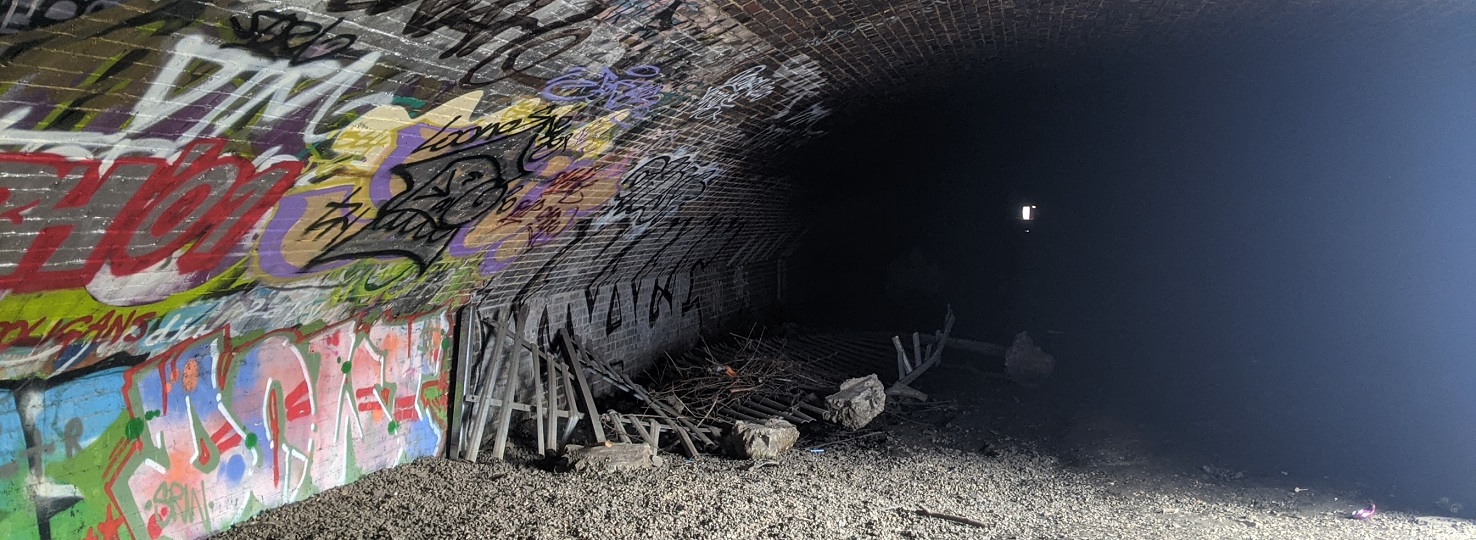The Cavalry Tunnel
The 686m long cavalry tunnel is located in the area of the Feltham Marshalling Yards close to Pevensey Road Nature Reserve.
For such a huge facility, the Marshalling Yards had a relatively short life of a little over fifty years. Construction started in 1916, largely carried out by prisoners of war. Its purpose was to replace the rail company’s freight facilities at Nine Elms which were becoming overwhelmed by demand.
The land had originally formed part of Hounslow Heath before the latter was gradually inclosed and developed in the 19th century. First operational in 1918 and completed in 1921, Feltham was once the busiest railway siding in the country, handling almost 3,500 wagons a day, over 51 km of track. During World War II it was used for moving war supplies, including materials destined for the 1944 Normandy Landings, and was duly targeted for bombing.
The tunnel was the solution to dealing with the river Crane. The L&SWR line bounding the site to the north already crossed the river, which passed beneath in a tunnel, so the engineers redirected the flow into a new culvert and extended the tunnel over it, leaving an uninterrupted surface above. A second, narrower, tunnel was provided alongside the main one, primarily to cope with overflows in times of flood. An urban myth quickly grew up that the real purpose of this 686 m passageway was to allow cavalry troops stationed at the barracks on Hounslow Heath access under the tracks. But although the overflow tunnel undoubtedly provided an informal pedestrian route for those courageous enough to brave the darkness, this seems unlikely. The structure is also sometimes known as the 40-Acre Tunnel, presumably after a field that once stood here.
Info taken from – London Underfoot


